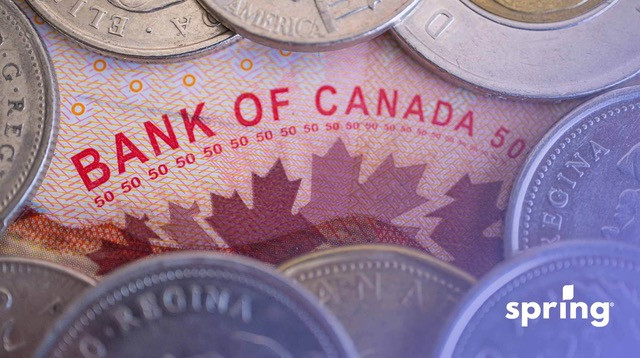TFSAs
As mentioned above, a TFSA is a tax-free savings account that you can open through a financial institution. You do not need to earn income to open a TFSA, and no one else will be able to access it because you are the account holder. Only you will be able to dictate any deposits or withdrawals. All you need to open an account is to be at least 18 years of age and have a valid social insurance number. Even if you don’t open your TFSA immediately, your contribution room left starts accumulating at 18.
You can access your TFSA through a branch or your financial institution’s online banking. It is important you keep track of these withdrawals and deposits to verify that you don’t exceed your contribution limits.
What You Can Invest In TFSA’s
The draw to TFSAs is that you can earn interest tax-free on your investments, and there are no penalties as long as you stay within your available TFSA contribution room. For income tax purposes, these can be popular accounts. Here are the types of investments that you can invest using your TFSA limits:
- Mutual Funds
- Bonds
- Guaranteed Investment Certificates
- Exchange-Traded Funds
- Cash
- Stocks
- Securities (those listed on a designated stock exchange)
- Certain shares of small business corporations
While you can also invest these amounts in RRSPs, TFSAs are better suited for those looking to make withdrawals instead of waiting for retirement. However, unlike RRSPs, TFSA withdrawals aren’t considered taxable income, no matter when you withdraw the funds.
Contribution Limits
Every year, the contribution limit on your TFSA changes. With these contribution limits, you have a yearly limit, but there is also a lifetime limit. This starts at the age of 18. For example, if you turned 18 in 2009, then your total lifetime contribution limit would be $95,000. Here is a breakdown of an individual’s contribution room for every calendar year.
| Year | Maximum Annual Contribution Room |
| 2009 – 2012 | $5,000 |
| 2013 – 2014 | $5,500 |
| 2015 | $10,000 |
| 2016 – 2018 | $5,500 |
| 2019 – 2022 | $6,000 |
| 2023 | $6,500 |
| 2024 | $7,000 |
So now that we know our annual and lifetimes, how does it work? Do these amounts carry over? Well, yes, they do. How much you can put into your TFSA without incurring a penalty depends on how much room you have used and when you opened the account.
Let’s say you turned 18 in 2009 but are just opening your account now; that would mean your TFSA contribution room before a penalty is $95,000, also known as your unused TFSA contribution room. If you have been adding money to your TFSA every year since you turned 18 and always put in the maximum amount, then your 2024 limit is $7,000 since you have no unused contribution room to carry over.
Finding Your TFSA Contribution Limits
If you want to make a deposit into your TFSA and are unsure of your contribution limits, the best way to determine your amounts is to look at your account on the CRA website. However, you can also request a TFSA transaction summary or TFSA statement. This will not only show you your limits but also your detailed contributions, withdrawals, and over-contribution amounts.
Withdrawing From Your TFSA
Unlike some other savings accounts, TFSAs are not locked. You can withdraw money from them whenever you want. That being said, the money you have withdrawn is still included in your contribution limit. You can’t just re-contribute the funds right away. This is the same whether you have a TFSA with one financial institution or more than one. That makes it extremely important that you pay attention to what you are depositing into and withdrawing from your account.
This doesn’t mean that you can’t replace the money that you withdrew though, you just can’t do it in the same year it was withdrawn. It will be added to your contribution limit in the next year. Because of this, it only really affects you if you are nearing or have used your full TFSA contribution limits. If you are in this situation then replacing the money in the same year would cause you to have to pay a penalty.
Contribution Limit Penalties
TFSA over-contribution does happen. If this happens, then the penalty for this is 1% of the highest excess TFSA amount. This penalty will happen every month until there is no more excess of the contribution limit, so it’s best to pay the excess immediately.
What To Do If You Over-Contributed
If you have over contributed to your TFSA then you should be able to remove the excess contributions as soon as you can. You can transfer funds immediately to any other account and put them back later on for the next tax year. This is the only way to fix TFSA over contributions and reduce the overall penalty amount that you have to pay. You should also receive a letter notifying you of the overage in the account and what the proposed penalty will be. If you have already moved the money then there shouldn’t be anything else for you to do.
This letter that you will receive, referred to as an excess amount letter, comes in the Proposed TFSA return package. This package includes a letter with information regarding the TFSA and what steps you need to take. It will also include the RC243-P form. This is the Proposed Tax-Free Savings Account TFSA Return form. This form will show the penalty amount for the overage. You can then either agree or disagree with this amount.
If you agree, then you can sign the form and send it back dated with your SIN number included. You can then make the penalty payments. If you don’t agree with the assessment then you can send a letter to the CRA (Canada Revenue Agency) explaining the situation including proof that the money was moved.
Cancellation of TFSA Taxes
Once the CRA has reviewed your situation, they are able to withdraw or cancel any penalty charges. Some reasons that they would do this are:
- If the overage was considered to be a reasonable error
- If the TFSA transactions that occurred to inflict the tax also inflicted other taxes under the Income Tax Act
- The extent of the payments made from the TFSA
The only way they will waive or cancel the tax, though, is if you send them a letter requesting they do so. As long as they agree with your reasoning then you could have the penalty waived.
Penalty Waiver Letter
The CRA requests this waiver letter if you don’t agree with their assessment. You should mention the reason for the overage with a detailed explanation and also include proof that the overage was corrected. Even though you may not feel you should have to pay for the tax implications, there will be extra penalties for not paying it, and it will take up to 12 weeks for them to process the request.
It is recommended that you pay the penalty fees as well as complete the TFSA excess amount form and detailed letter. Once your request has been processed you will be notified if you will be getting a refund or not. This is all done by the TFSA processing unit within the CRA.
That being said, some people choose to wait to pay, but it is best to speak with the CRA or someone who can help you through the process to determine the best course of action.
Having Multiple TFSAs
In Canada, there’s no limit as to how many TFSA accounts you can have. You can open your own TFSA with a new financial institution or TFSA provider at any time. However, it’s important to consider the fact that you don’t have a separate contribution limit for each account. Even though the TFSA contribution room accumulates and allows you to use contributions from previous years to future years, it’s still combined for all of your accounts, so it’s important to pay close attention to your contributions. Having more than one account can make it easier to have excess amounts, which can lead to a TFSA over-contribution penalty.
How TFSAs Compare To RRSPs
While TFSAs and RRSPs are both popular ways to save for retirement, they each have their own rules. Which one you decide to invest in is based on how you wish to use the funds and how much you’re looking to contribute every year. That said, with RRSPs, you are able to open an account for your spouse or common-law partner, which you can’t with TFSAs.
RRSPs, also known as Registered Retirement Savings Plans, are another type of registered account. These accounts have annual contribution limits of 18% of your annual income up to a specified amount. The limits accumulate from year to year, leading to a total contribution limit. However, you can’t withdraw early from a RRSP without a tax penalty.
One thing about RRSPs, though, is that your contributions are tax-deductible, while TFSAs aren’t tax-deductible. However, you don’t pay any capital gains on amounts earned with RRSPs. Any amounts withdrawn from RRSPs at any time are considered to be taxable income or income earned, while TFSA withdrawals aren’t.









